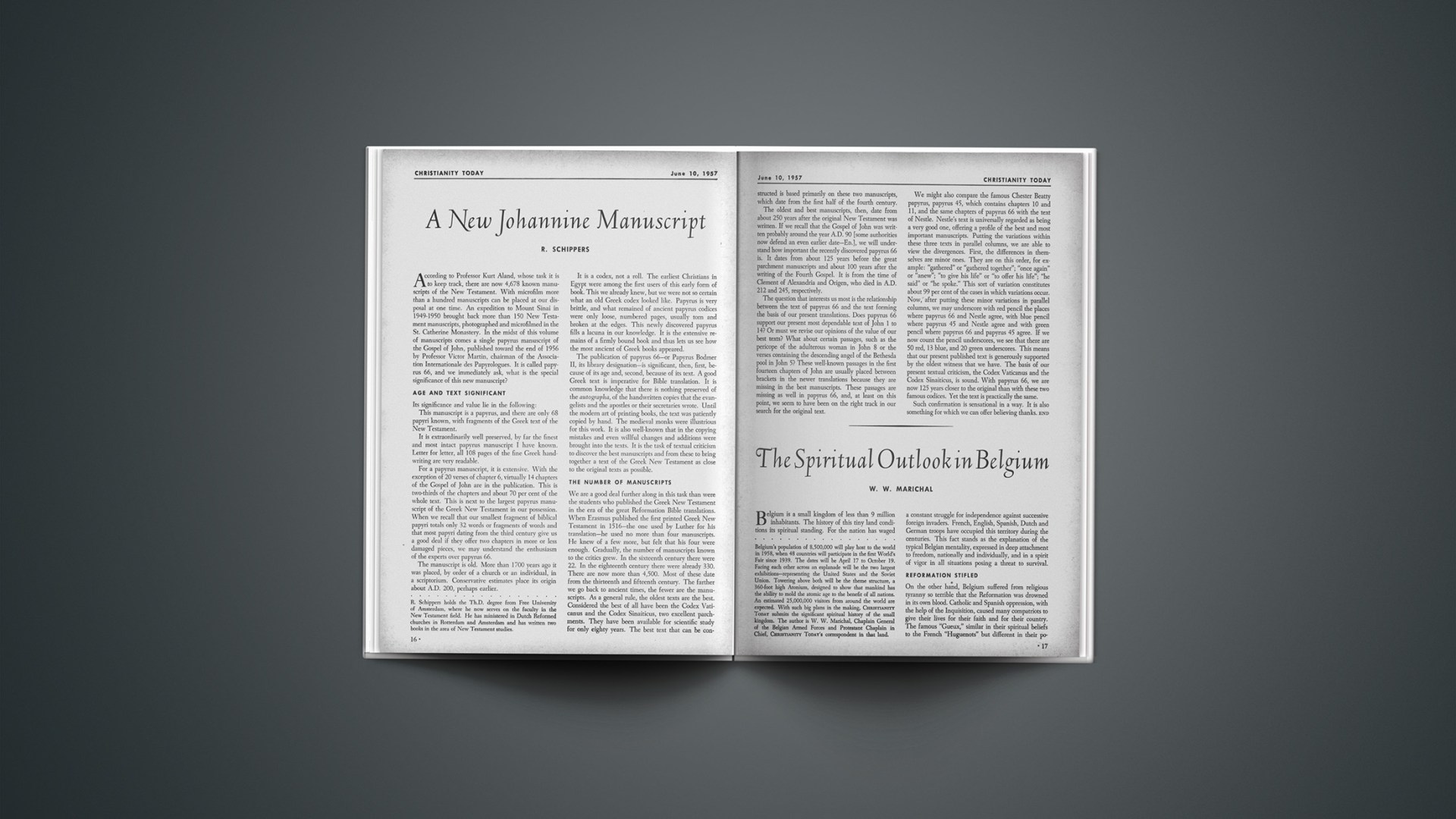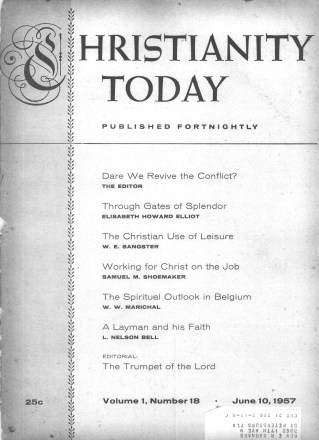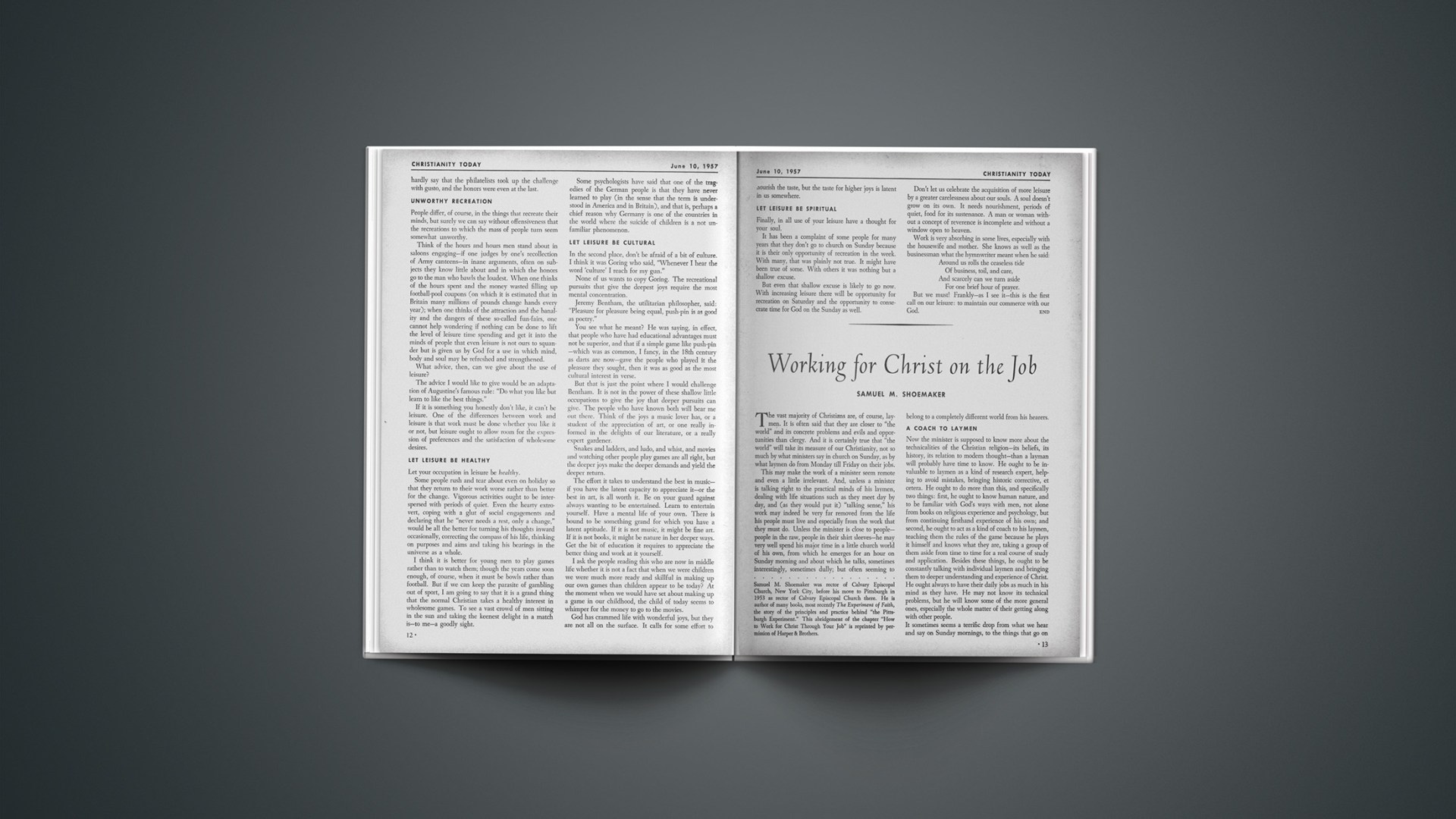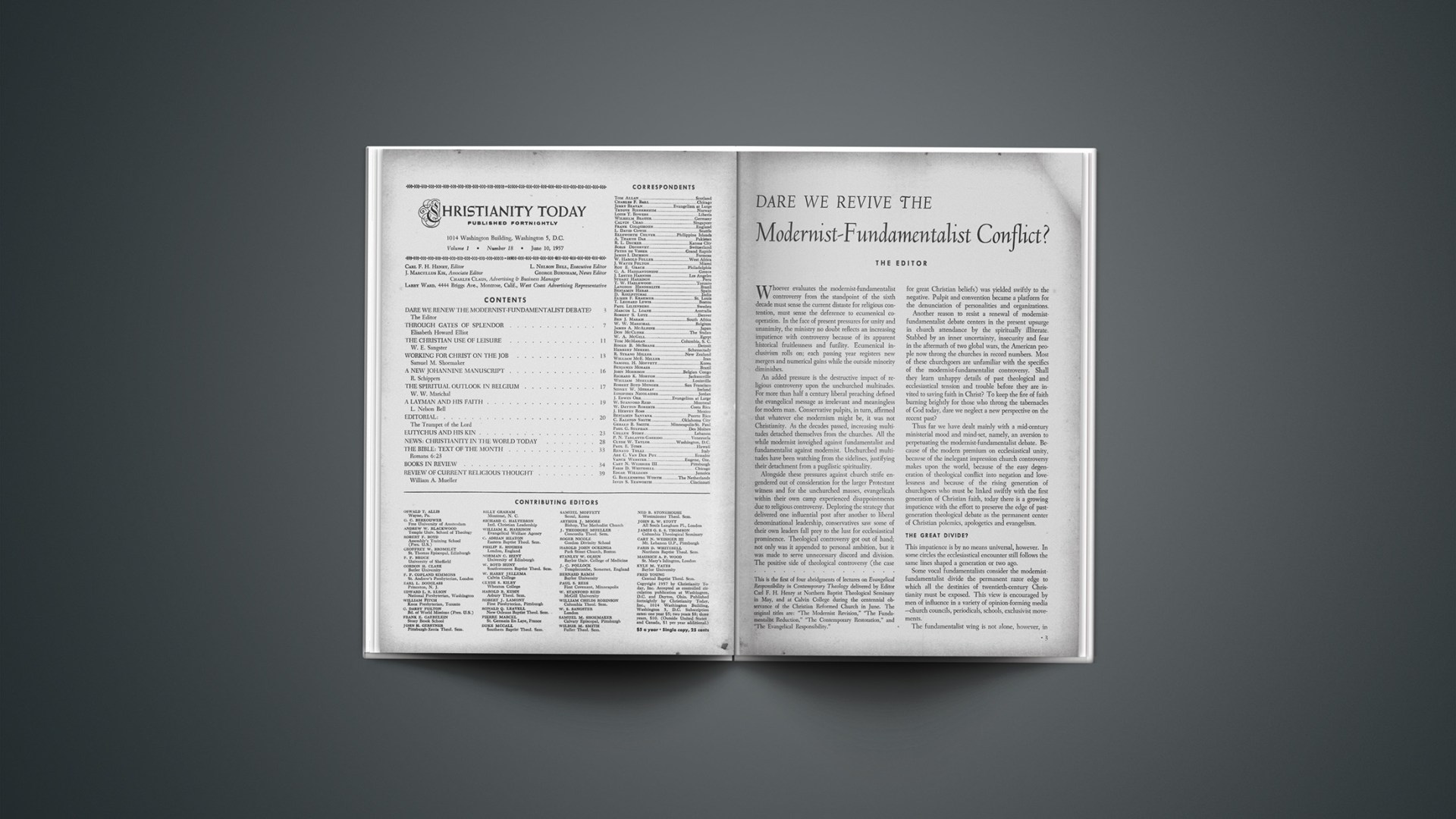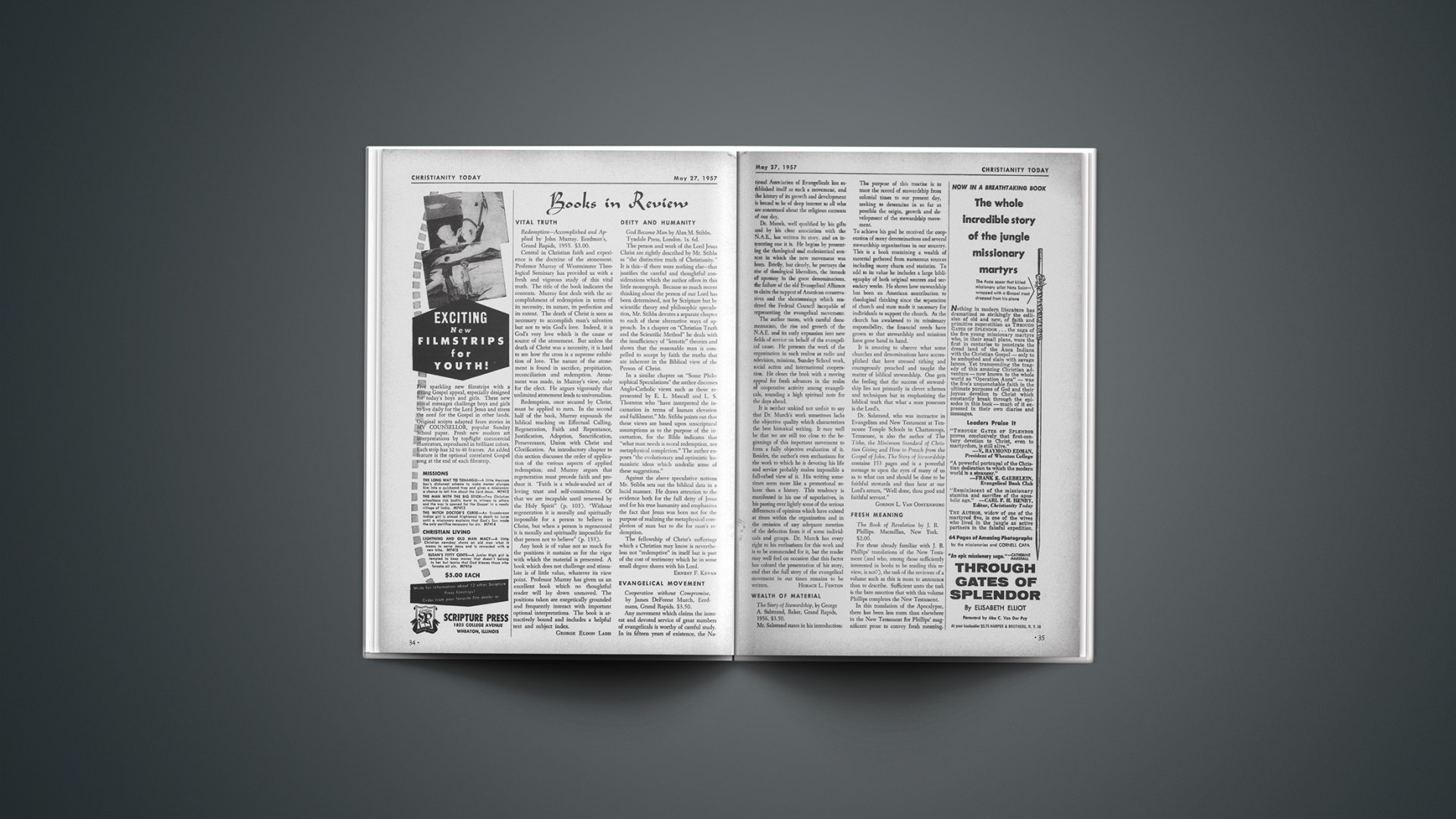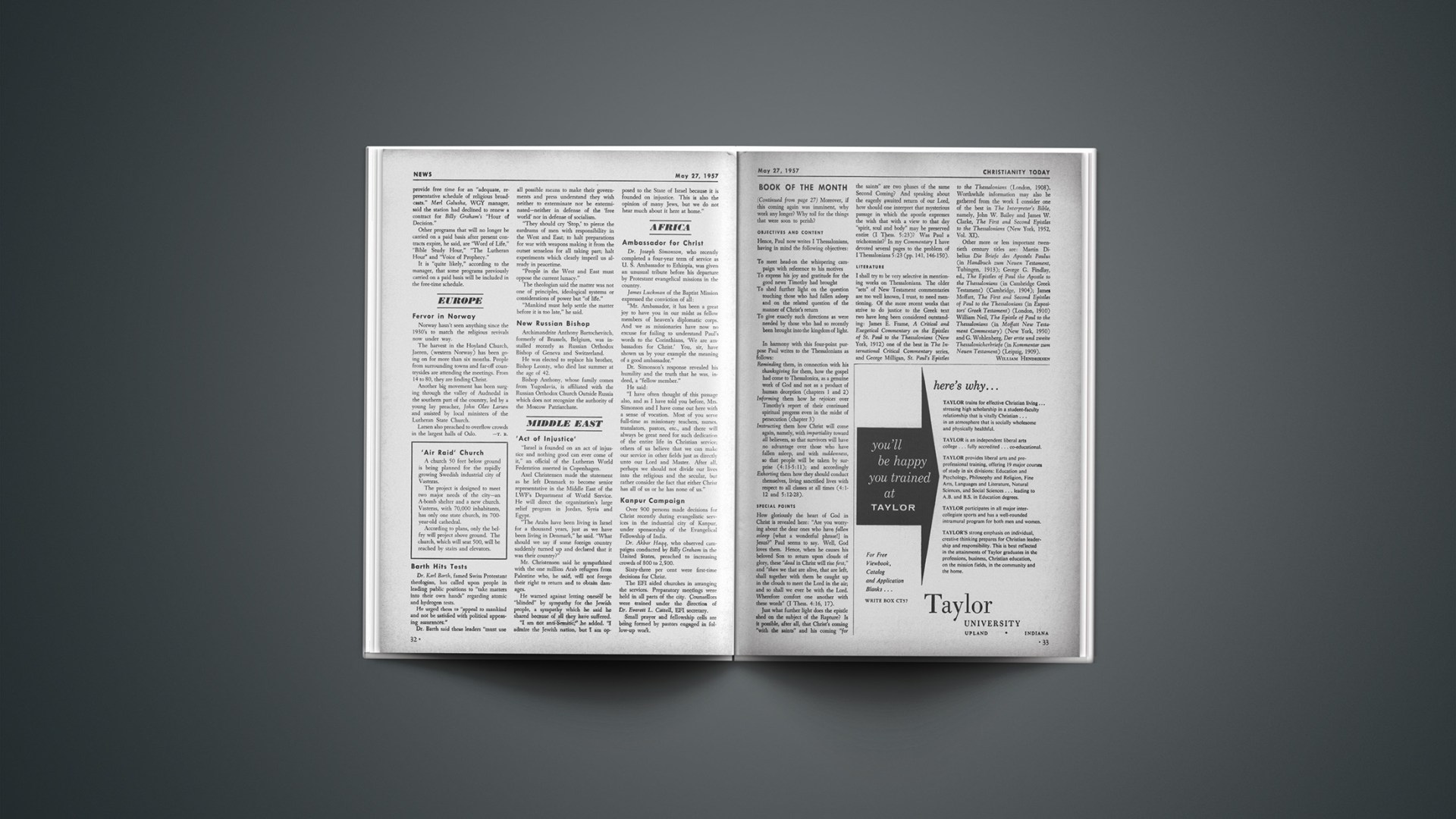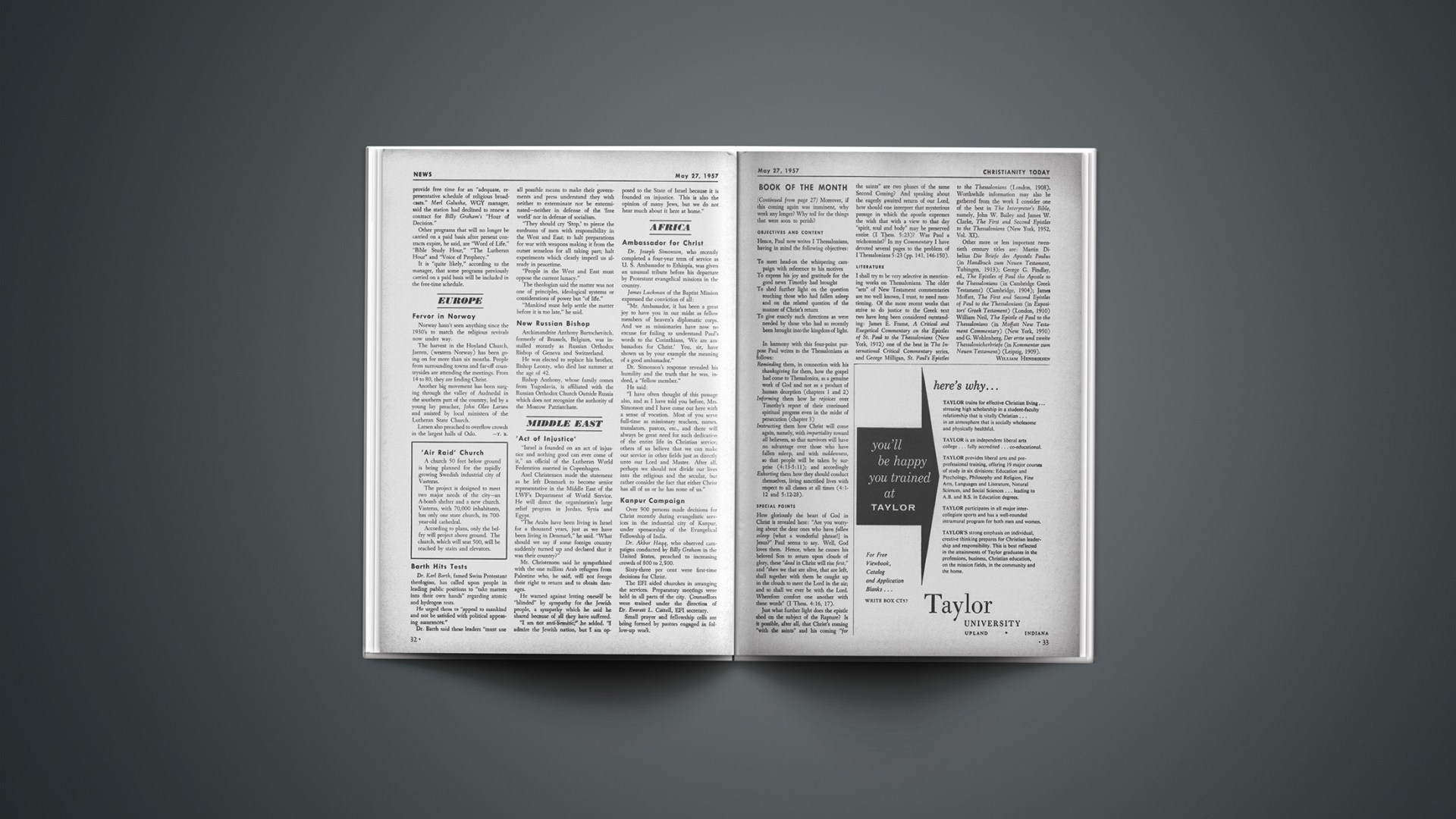According to Professor Kurt Aland, whose task it is to keep track, there are now 4,678 known manuscripts of the New Testament. With microfilm more than a hundred manuscripts can be placed at our disposal at one time. An expedition to Mount Sinai in 1949–1950 brought back more than 150 New Testament manuscripts, photographed and microfilmed in the St. Catherine Monastery. In the midst of this volume of manuscripts comes a single papyrus manuscript of the Gospel of John, published toward the end of 1956 by Professor Victor Martin, chairman of the Association Internationale des Papyrologues. It is called papyrus 66, and we immediately ask, what is the special significance of this new manuscript?
Age And Text Significant
Its significance and value lie in the following:
This manuscript is a papyrus, and there are only 68 papyri known, with fragments of the Greek text of the New Testament.
It is extraordinarily well preserved, by far the finest and most intact papyrus manuscript I have known. Letter for letter, all 108 pages of the fine Greek handwriting are very readable.
For a papyrus manuscript, it is extensive. With the exception of 20 verses of chapter 6, virtually 14 chapters of the Gospel of John are in the publication. This is two-thirds of the chapters and about 70 per cent of the whole text. This is next to the largest papyrus manuscript of the Greek New Testament in our possession. When we recall that our smallest fragment of biblical papyri totals only 32 words or fragments of words and that most papyri dating from the third century give us a good deal if they offer two chapters in more or less damaged pieces, we may understand the enthusiasm of the experts over papyrus 66.
The manuscript is old. More than 1700 years ago it was placed, by order of a church or an individual, in a scriptorium. Conservative estimates place its origin about A.D. 200, perhaps earlier.
It is a codex, not a roll. The earliest Christians in Egypt were among the first users of this early form of book. This we already knew, but we were not so certain what an old Greek codex looked like. Papyrus is very brittle, and what remained of ancient papyrus codices were only loose, numbered pages, usually torn and broken at the edges. This newly discovered papyrus fills a lacuna in our knowledge. It is the extensive remains of a firmly bound book and thus lets us see how the most ancient of Greek books appeared.
The publication of papyrus 66—or Papyrus Bodmer II, its library designation—is significant, then, first, because of its age and, second, because of its text. A good Greek text is imperative for Bible translation. It is common knowledge that there is nothing preserved of the autographa, of the handwritten copies that the evangelists and the apostles or their secretaries wrote. Until the modern art of printing books, the text was patiently copied by hand. The medieval monks were illustrious for this work. It is also well-known that in the copying mistakes and even willful changes and additions were brought into the texts. It is the task of textual criticism to discover the best manuscripts and from these to bring together a text of the Greek New Testament as close to the original texts as possible.
The Number Of Manuscripts
We are a good deal further along in this task than were the students who published the Greek New Testament in the era of the great Reformation Bible translations. When Erasmus published the first printed Greek New Testament in 1516—the one used by Luther for his translation—he used no more than four manuscripts. He knew of a few more, but felt that his four were enough. Gradually, the number of manuscripts known to the critics grew. In the sixteenth century there were 22. In the eighteenth century there were already 330. There are now more than 4,500. Most of these date from the thirteenth and fifteenth century. The farther we go back to ancient times, the fewer are the manuscripts. As a general rule, the oldest texts are the best. Considered the best of all have been the Codex Vaticanus and the Codex Sinaiticus, two excellent parchments. They have been available for scientific study for only eighty years. The best text that can be constructed is based primarily on these two manuscripts, which date from the first half of the fourth century.
The oldest and best manuscripts, then, date from about 250 years after the original New Testament was written. If we recall that the Gospel of John was written probably around the year A.D. 90 [some authorities now defend an even earlier date—ED.], we will understand how important the recently discovered papyrus 66 is. It dates from about 125 years before the great parchment manuscripts and about 100 years after the writing of the Fourth Gospel. It is from the time of Clement of Alexandria and Origen, who died in A.D. 212 and 245, respectively.
The question that interests us most is the relationship between the text of papyrus 66 and the text forming the basis of our present translations. Does papyrus 66 support our present most dependable text of John 1 to 14? Or must we revise our opinions of the value of our best texts? What about certain passages, such as the pericope of the adulterous woman in John 8 or the verses containing the descending angel of the Bethesda pool in John 5? These well-known passages in the first fourteen chapters of John are usually placed between brackets in the newer translations because they are missing in the best manuscripts. These passages are missing as well in papyrus 66, and, at least on this point, we seem to have been on the right track in our search for the original text.
We might also compare the famous Chester Beatty papyrus, papyrus 45, which contains chapters 10 and 11, and the same chapters of papyrus 66 with the text of Nestle. Nestle’s text is universally regarded as being a very good one, offering a profile of the best and most important manuscripts. Putting the variations within these three texts in parallel columns, we are able to view the divergences. First, the differences in themselves are minor ones. They are on this order, for example: “gathered” or “gathered together”; “once again” or “anew”; “to give his life” or “to offer his life”; “he said” or “he spoke.” This sort of variation constitutes about 99 per cent of the cases in which variations occur. Now, after putting these minor variations in parallel columns, we may underscore with red pencil the places where papyrus 66 and Nestle agree, with blue pencil where papyrus 45 and Nestle agree and with green pencil where papyrus 66 and papyrus 45 agree. If we now count the pencil underscores, we see that there are 50 red, 13 blue, and 20 green underscores. This means that our present published text is generously supported by the oldest witness that we have. The basis of our present textual criticism, the Codex Vaticanus and the Codex Sinaiticus, is sound. With papyrus 66, we are now 125 years closer to the original than with these two famous codices. Yet the text is practically the same.
Such confirmation is sensational in a way. It is also something for which we can offer believing thanks.
R. Schippers holds the Th.D. degree from Free University of Amsterdam, where he now serves on the faculty in the New Testament field. He has ministered in Dutch Reformed churches in Rotterdam and Amsterdam and has written two books in the area of New Testament studies.

